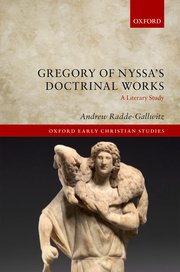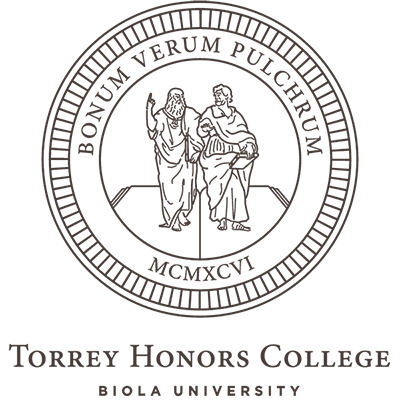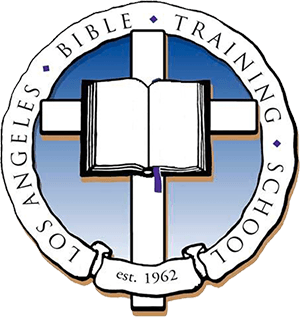A scene from The Canterbury Psalter (12th century)
Blog
Coordinating Exegesis
Gregory of Nyssa takes up the Nicene faith and sings it in the key of life:
We believe in the Father of our Lord Jesus Christ (1 Pet 1:3) who is the fountain of life (cf. Ps 36:9), and in the only-begotten Son of the Father (Jn 3:14, 18) who is the Author of life, as the Apostle says (Acts 3:15), and in the Holy Spirit of God, concerning whom the Lord said, it is the Spirit who gives life (Jn 6:40).1
You see what he is doing: Taking the theme of life, and knowing that God is Father, Son, and Holy Spirit, Nyssa looks through Scripture to find passages where each person of the Trinity is linked to life. What he finds is the Father as fountain, Son as source, and Spirit as giver. This corresponds neatly with both Matthew 28:19 (the sequence of names Father-Son-Spirit) and with the order in which the persons live and work (all things are from the Father, through the Son, in the Spirit). Nyssa is in the business of demonstrating the orthodoxy of his doctrine of God, and simultaneously explaining how the reality of salvation depends on a well-ordered doctrine of the Trinity.

Andrew Radde-Gallwitz has provided a name and a definition for this interpretive technique:
This passage contains an example of what might be called “coordinating exegesis,” a mode of interpretation that is ubiquitous in pro-Nicene authors. An exegesis is coordinating when an interpreter cites passages containing the same or a similar predicate for each of the three hypostases with the intention of demonstrating a close connection among them. Here, the giving of life is ascribed to the three persons, not through Gregory’s own word, but by stringing together three citations that contain such a predicate with the three distinct subjects.2
This is a great name for what is indeed a “mode…ubiquitous in pro-Nicene authors.” It’s related to a broader and more complex phenomenon that Steven Presley has tracked as “intertextual reception,” wherein early Christian theologians understood texts integratively as part of a broader network of texts taken to be necessarily related theologically. When Radde-Gallwitz calls it “coordinating exegesis” he’s especially drawing attention to the way Matthew 28:19 serves as a template for the task: You start with the given trinitarian baptismal formula, “Father, Son, and Holy Spirit,” add a thematic prompt (life, in this case), and then move out to identify passages that coordinate with the formula.
Here’s the portion of Nyssa’s Letter 5 that comes right before the quotation I started with. Watch for the way the trinitarian baptismal formula serves as the template into which the other testimonies are coordinated:
We confess that the doctrine of the Lord which he gave to his disciples when he delivered to them the mystery of piety is the foundation and root of right and sound faith (Tit 1.13, 2.2), and we do not believe there is anything else surer or more sublime than that tradition. Now the Lord’s doctrine is this: Go, he said, make disciples of all the nations, baptizing them in the name of the Father and of the Son and of the Holy Spirit (Mt 28.19). Therefore, since the power that gives life to those who are reborn from death to eternal life comes from the Holy Trinity upon those who are deemed worthy of the grace through faith, and likewise the grace is imperfect if any of the names of the Holy Trinity are omitted in saving baptism (cf. Acts 19.2–3)— for the mystery of rebirth is neither perfected without the Father by the Son and the Spirit alone, nor does the perfection of life come through the Father and the Spirit in baptism if the Son is passed over in silence, nor is the grace of the Resurrection perfected by the Father and the Son if the Spirit is omitted.3
One of the most instructive things in Radde-Gallwitz’s book is the way he traces the importance of Matt 28:19 in Nyssa’s pro-Nicene theology. It really is an integrating, or coordinating center. And “coordinating exegesis” is a mode of reading that takes its stand on that dominical authority, moving out from there to embrace the full canonical witness under the heading of trinitarian theology.
______________________
1Nyssa, Letter 5, To Those Who Discredit His Orthodoxy, in Anna M. Silvas, Gregory of Nyssa: The Letters: Introduction, Translation, and Commentary. VCS 83 (Leiden: Brill, 2007), 138-9. I changed the form of Silvas’ inserted scripture references, and tweaked the Psalm citation to refer to standard modern Bibles. [This is the best academic way to refer to this primary text, but note that Radde-Gallwitz provides his own translation of the key lines of letter 5 (though he regularly uses Silva’s throughout the rest of his book). The letter is also available online in English (under the title “Letter 2, to the city of Sebasteia) in Schaff, NPNF ser. 2, vol. 5, 523–524.]
2Andrew Radde-Gallwitz, Gregory of Nyssa’s Doctrinal Works: A Literary Study (Oxford: Oxford University Press, 2018), 48.
3from Silvas, 138.
About This Blog

Fred Sanders is a theologian who tried to specialize in the doctrine of the Trinity, but found that everything in Christian life and thought is connected to the triune God.


